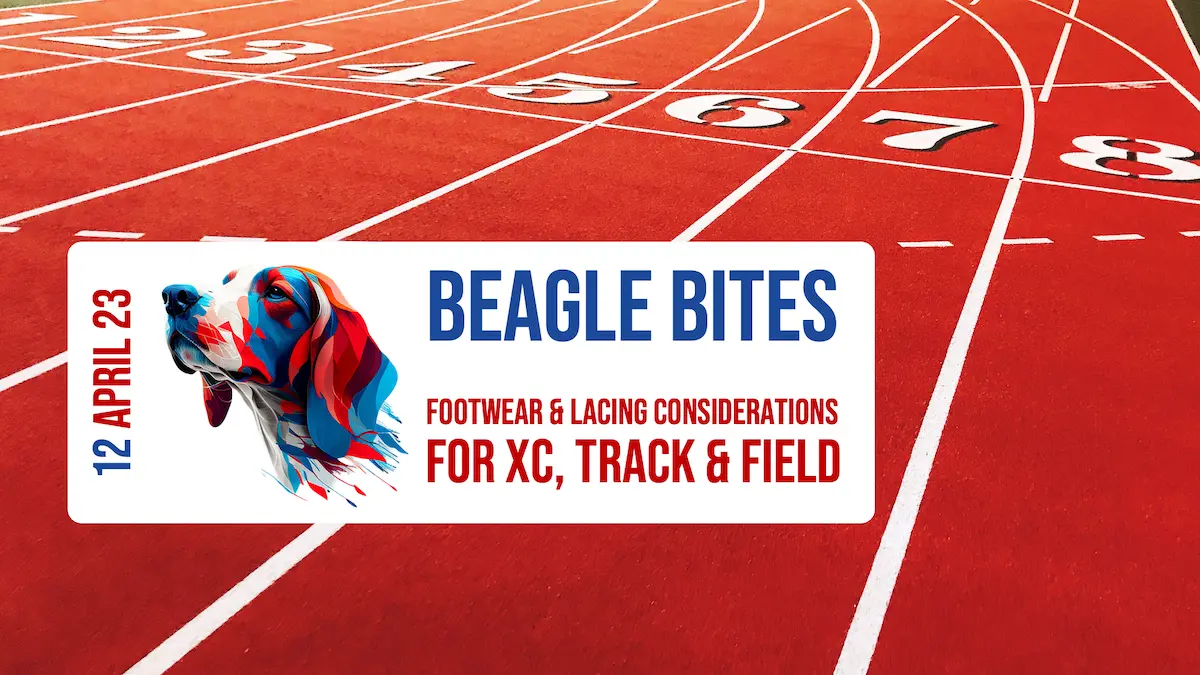The footwear we use in athletics affects our performance. How a shoe is laced can play an important role in how your footwear performs providing a comfortable fit and more support, avoiding common issues such as blisters, slippage and pressure points.
The following are some common lacing techniques for trainer and spikes beyond the traditional criss-cross pattern:
Content recreated from Running Shoe Lacing Techniques for Better Fit | ASICS NZ accessed 9/4/23





Shoe care:
Neither trainer or spike shoes are designed to be washed in the washing machine, the glues used in manufacturing will likely perish and fail. Shoes should be cleaned by hand and dried at room temperature. It can be beneficial to pad out your wet trainers or spikes with newspaper to enable the upper to maintain its shape and form, and prevent the fabric breaking down if left wet for too long.
Spikes:
Buying the first pair of spikes can be challenging, the fits do vary by brand, and the designs vary depending on their intended use. Here is a simple information guide.
Mid distance:

A mid distance spike is a good starting point for the first pair, or general spike. Beyond its design of middle distance (600m +) it is the go to spike for the junior athlete wanting to compete in multiple events, track, field and cross country. It provides a small heel for cushioning, which reduces strain on the Achilles and calf complex (gastrocnemius and soleus) during jog and recovery phases of track training. Sprinters will often use a mid-distance spike during winter and sprint endurance training.
Long distance and cross-country spikes:
These often provide the best cushioning while still providing a lightweight feel. A slighter deeper heel and forefoot cushioning than the mid distance spike. Generally made from more durable but heavier materials. The cross-country spike is often designed with more ankle support for uneven terrain.
Sprint:

Usually the lightest shoe of the spikes range, they have no heel cushioning and the forefoot plate at a steeper angle to encourage toe running. The sole plate can vary in rigidity which can benefit a 200m runner.
Field event spikes:
These become more technical as the athlete specialises. A Javelin spike includes both toe and heel spike plates, and additional reinforcements to the shoe upper, often a higher ankle line for additional support. A high jumper will often use a specific high jump spike for their take off leg, comprising toe and heel spike plates and again specialist reinforcements to the upper.
Javelin (Left) High Jump (Right):

The needles / spikes:
Some venues specify which type of spike is preferred, or must be used for their tracks.

Starting from the left:
Blank – often used in shoes with multiple (8 or more) spike holes to enable the athlete to create the optimum grip from 6 or 7 spikes in the plate.
Tartan – designed more for rubber tracks, creates a deeper penetration into the track. Generally not permitted on Mondo tracks due to the damage they cause to the surface.
Pyramid – the classic spike for use on track or cross country. These are an excellent spike to start with.
Needle or Pin – slimmer than pyramid often better for the lighter runner, and common in use on cross country and grass courses. Use these with caution if you are new to spikes as they tend to penetrate deeper and are much sharper than tartan or pyramid.
Xmas tree – normally specified for Mondo surfaces, such as Lee Valley. This is technically a compression spike and therefore compresses as opposed to penetrating the track surface. If xmas tree spikes cannot be obtained then Lee Valley will allow 6mm Omni-lite or ceramic spikes though these should never be walked on concrete or tile as they are prone to shattering and cost significantly more than metal spikes.
Prior to screwing the spikes in to the plate do consider placing a dab of Vaseline, or copper grease in the hole to prevent corrosion welding the spike to the spike plate. When you renew your spikes they should be easy to remove, you then add another dab prior to fitting new.
Various lengths of spike are available, all synthetic, mondo, rubber or tartan tracks will specify a maximum of 6mm, it is common for spike lengths and design to be checked in competitions. though 9mm might be permitted for some field events. 9mm, 12mm, 15mm are commonly used in grass and cross-country events depending on the surface and recent weather. It is beneficial to have various lengths of spike with you for off track events.
Heel drop
The heel drop of your running shoes can affect how you run, and affect possible injuries. It can impact your running style affecting cadence, ankle mobility, running form changing from a midfoot to forefoot strike. This is an area of shoe design not commonly considered when purchasing running shoes for most athletes.
Most running shoe manufactures will specify the heel drop as part of the shoes’ technical information. It is the difference between the heel and mid foot midsole depth.
A higher drop shoe will place more load and stress to the knees and hips. A low drop shoe can increase the load on tight Achilles tendons.
If you think you would benefit from further information on heel drop, Paul is able to offer some guidance.



